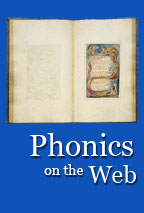The English alphabet is a set of 26 letters, each of which roughly represents a phoneme. The word "alphabet" comes from alpha and beta, the first two letters of the Greek alphabet.
The 26 letters of the alphabet are: A, B, C, D, E, F, G, H, I, J, K, L, M, N, O, P, Q, R, S, T, U, V, W, X, Y, and Z. Each comes in both an upper and lower case. The letters of the alphabet in lower case are a, b, c, d, e, f, g, h, i, j, k, l, m, n, o, p, q, r, s, t, u, v, w, x, y, and z.
Of these 26 letters, there are two kinds: consonants and vowels. The consonants of the alphabet are: b, c, d, f, g, h, j, k, l, m, n, p, q, r, s, t, v, w, x, y, and z. The vowels are a, e, i, o, and u. Note that the letter y is classified as a consonant, but sometimes acts like a vowel.
Each letter is like an animal. Each has a name, but also makes a certain sound. For example, a cat says "meow." These sounds are called phonemes.
Looking for L-Serine powder? Try my other website, Sterling Supplements.




 The Alphabet
The Alphabet
